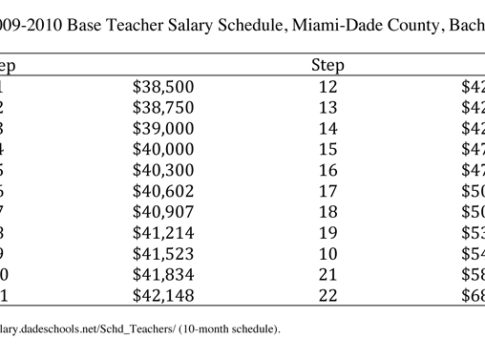If a state mandates that every school reduce class sizes, will students learn more? Since reducing class size is very expensive, that is a question state legislatures are asking themselves at a time when fiscal deficits are looming nearly everywhere. To that question, a just released study of the Florida Class Size Amendment says “No.” Telling schools they must reduce class size yields no benefit, it reports.
Florida is an interesting place to explore this issue, because students there have been improving at a faster rate than any other state in the union, according to Matt Ladner at the Goldwater Institute. Using data from the National Assessment of Educational Progress, Ladner shows that student performance in 4th and 8th grade reading and math has leaped forward in Florida while it has remained stagnant in many other states.
Some have attributed the spectacular Florida gains to the state’s accountability system, its Just Read initiative, or the state’s school choice programs. But others have attributed the Florida gains to an amendment to the Florida Constitution, adopted by the voters in 2002, which requires every school district to reduce its average class size. To fulfill the purposes of the amendment, the Florida state legislature has in recent years allocated state funds that must be used for class size reduction in those districts not yet at the limit. The remaining districts have received comparable amounts to be used for any educational purpose they see fit.
The size of classes fell by an average of 3 students more in the mandated districts than in those not subject to the mandate. The cost to the state is running about $4 billion a year.
Everyone loves smaller classes—parents, teachers, and students–so one can understand the popularity of constitutionally mandated class-size reductions. Twenty-four states have laws that either limit class size or else allocate monies to be used specifically for that purpose. And class size reduction might be effective as well, as an experimental study in Tennessee has suggested.
So it is interesting to learn from Dr. Matthew Chingos, a research fellow in Harvard’s Program on Education Policy and Governance (PEPG), just what has happened in Florida as a result of the passage of the class size reduction amendment. (Full disclosure: I am PEPG’s director.) His just released study is an econometric analysis that looks at changes in student math and reading test performance in schools throughout Florida, both before and after the class size amendment was adopted. Adjusting for many other factors that can affect student performance, Chingos compares changes in the rate of gain in student test performance in school districts that were forced to reduce class size with changes in the rate of gain in other districts that could spend the funds as they saw fit. He found no detectable benefit from mandated class size reduction–either for students in general or for any student subgroup, racial, ethnic, or level of disadvantage. In Chingos’s words, “the study strongly suggests that monies restricted for the purpose of funding class-size reduction mandates are not a productive use of limited educational resources.”
Why do his results differ from those found in Tennessee? Chingos does not offer any definite explanation, but here are some possibilities. The teachers in Tennessee knew they were participating in an experiment, which if successful could persuade the legislature to make class size reduction a statewide priority. Knowing that a positive result could be of benefit to them, the teachers assigned to smaller classes might have become more assiduous and enthusiastic than those assigned to larger classes.
Secondly, the schools with larger classes did not receive comparable fiscal resources in Tennessee, as was the case in Florida. The gains in Tennessee may have come from extra resources, not anything specific to class size reduction. Finally, the Florida information tells us what happens when a state government tries to bring about class size reduction on a large scale, whereas the Tennessee experiment was limited to only a fairly small number of schools and to much larger reductions in class size.
In November, Florida voters will be asked to soften the class size amendment. Careful consideration of the Chingos results may help them decide.




